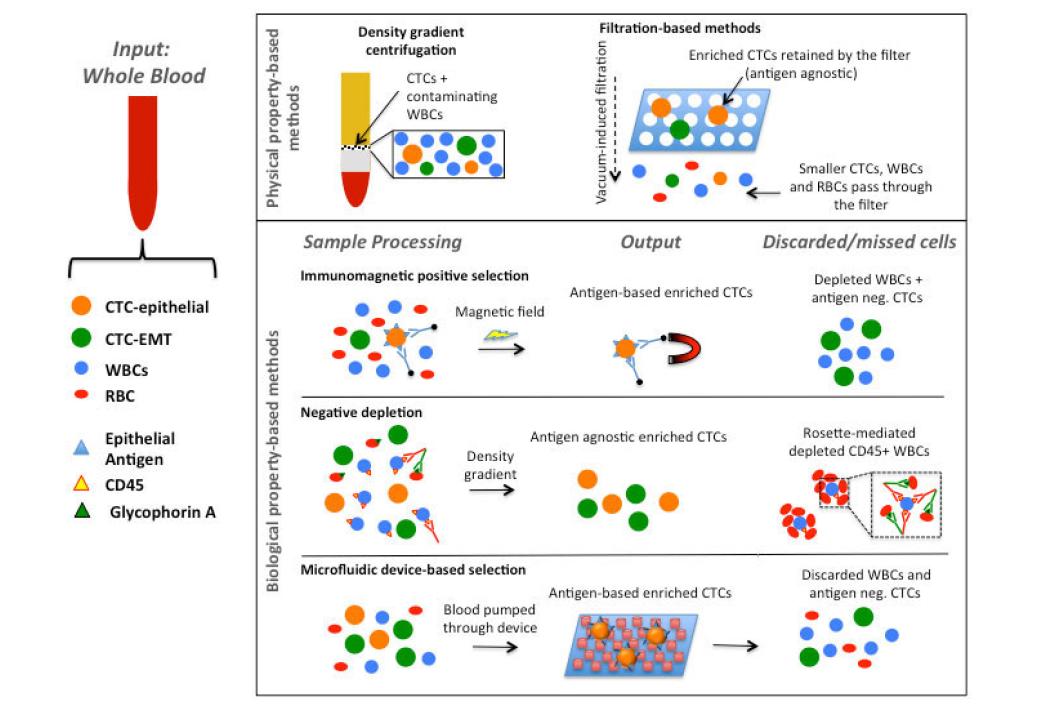fig1

Figure 1. Descriptive overview of the main methodologies to isolate CTCs from the peripheral blood of cancer patients. CTCs can be isolated and enriched from the contaminating WBCs based on either their physical properties (e.g. size, density) or their biological properties (i.e. expression of tumor-selective markers on the plasma membrane). Physical property-based techniques have the potential advantage of isolating molecularly heterogeneous CTC subpopulations, thus including CTCs undergone EMT with low/absent expression of epithelial surface markers. Presence of contaminating leukocytes represents the major limit. Biological property-based methods rely on positive selection of CTCs based on the expression of cancer-specific markers on the surface of circulating tumor cells; alternatively, negative depletion leaves out the unwanted contaminating leukocytes, based on immunomediated depletion of cells expressing the leukocyte-specific CD45 marker. Biological property-based technologies are characterized by high purity of the obtained CTC population, with the caveat of missing CTC subpopulations lacking the expression of the surface marker when positive selection is adopted. CTC: circulating tumor cell; EMT: epithelial-mesenchymal transition; WBC: white blood cells; RBC: red blood cell




